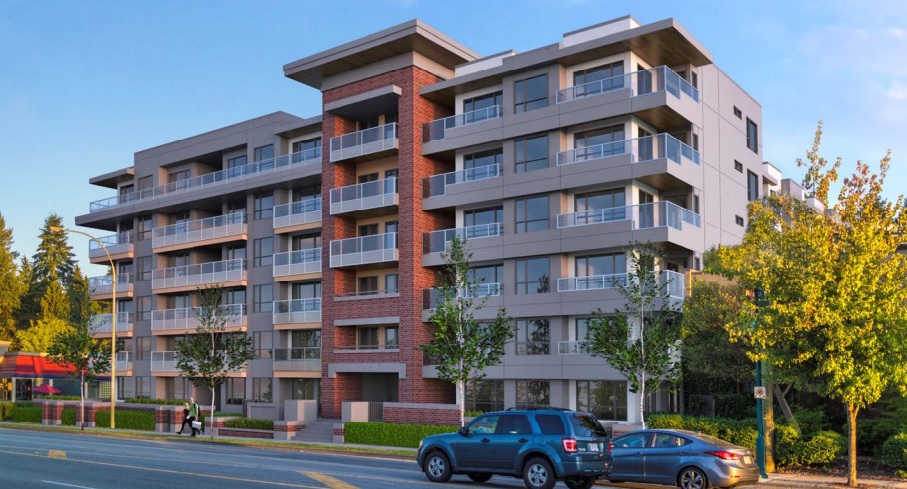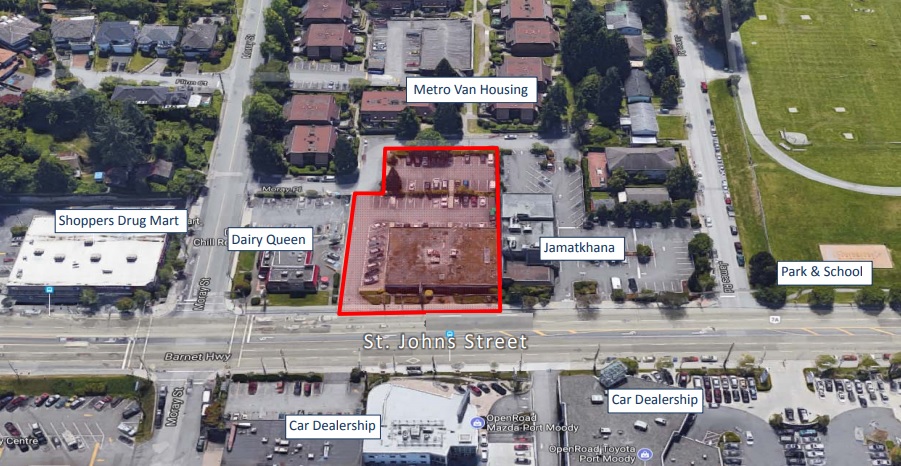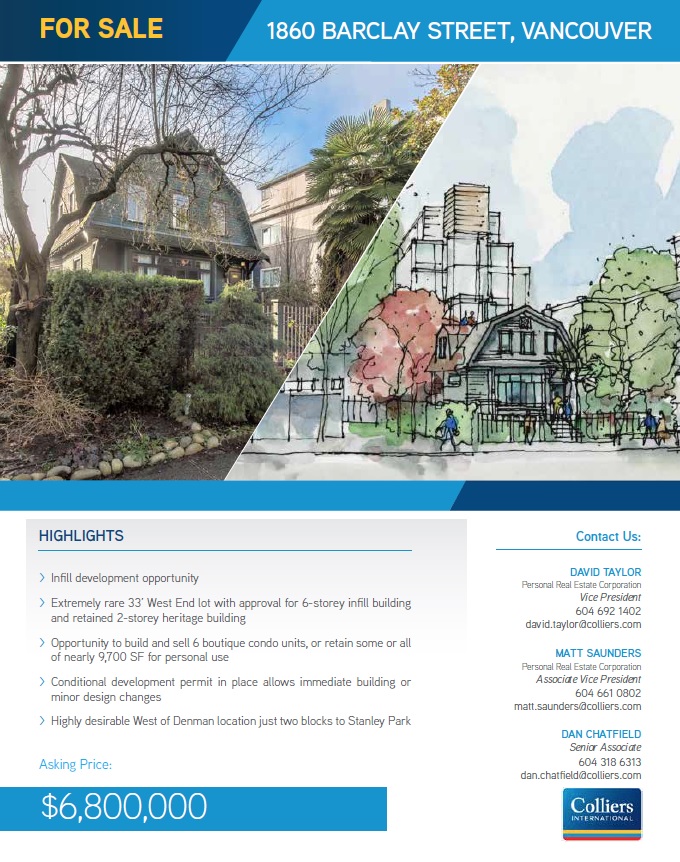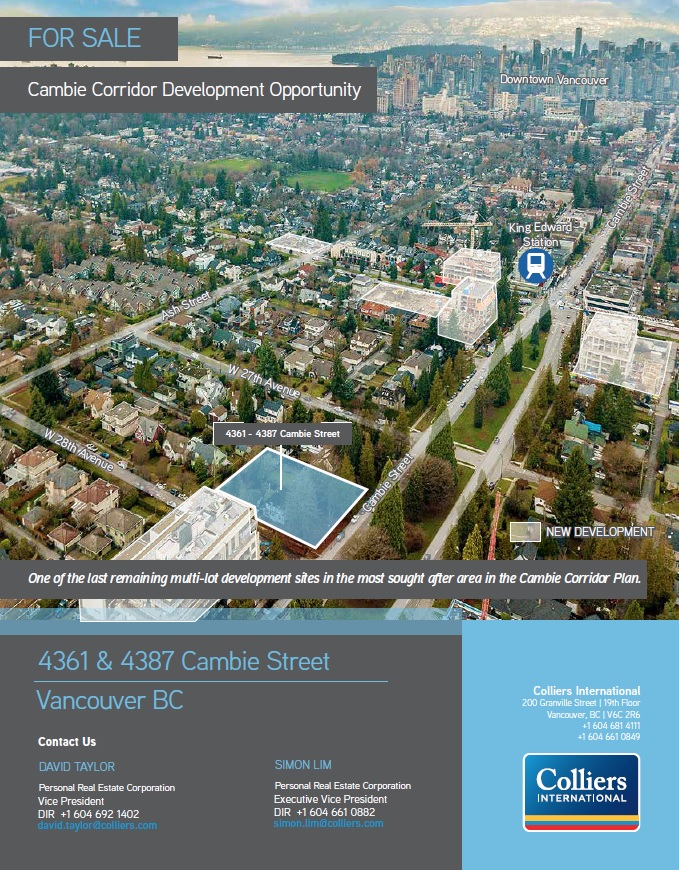Woodbridge Properties has submitted their formal application to develop a rental apartment project on a site at 3131-3137 St. Johns Street, on the South side of the street between Moray Street and James Road. The site is located 600 metres from Inlet Centre Station. The application, first introduced to the public last summer, requires an OCP amendment, rezoning and development permit, and will now go forward for council’s consideration.
Plans call for a new 6-storey building that includes:
- 142 rental apartment units;
- 6 studios, 59 one-bedrooms, 72 two-bedrooms and 5 three-bedrooms;
- A total density of 3.20 FAR;
- 180 underground parking spaces;
- A total building height of 60.4 ft;
- An on-site children’s amenity space.








